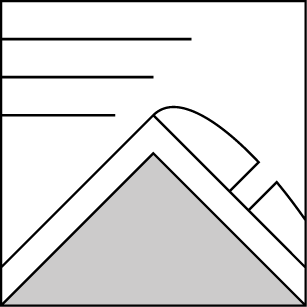Basic Information
Observation Details
Observation Date:
March 10, 2022Submitted:
March 10, 2022Observer:
SAC - Chris LundyZone or Region:
Sawtooth and Western Smoky MtnsLocation:
Iron Cr/Goat Cr divide (6500-9100', N-E-S)Signs of Unstable Snow
Recent Avalanches?
None ObservedCracking?
None ExperiencedCollapsing?
IsolatedSnow Stability
Stability Rating:
GoodConfidence in Rating:
ModerateStability Trend:
SteadyBottom Line
I observed fresh wind drifts up to 2' thick, but they did not extend far off the ridge. I received two collapses in fresh drifts, but stomping and ski cutting did not produce any significant cracking. Weak surfaces, as well as the drought facet layer down about 16" on sheltered/shady slopes, could be problematic if the forecasted snowfall this weekend and early next week materializes.
Media/Attachments




Advanced Information
Weather Summary
Cloud Cover:
Partly CloudyTemperature:
est. low teensWind:
Light , NNew/Recent Snowfall:
HST from recent storms ranged from 3-4cm down low to around 8-10cm at my high point.Cold, single-digit morning. High clouds increased midday. The clouds and cold temps seem to prevent much warming of snow surfaces, at least before I left the field at 1430. Winds were L occasionally gusting to M. I saw some snow movement on the high peaks, but that wouldn't take much wind given the low-density newer snow. Most N ridgelines had been stripped back to rain crusts or old hardened surfaces, so there didn't appear to be a ton of snow left to move as long as winds stay N-ish.
Avalanche Observations
I had good visibility and did some glassing from my high point. I did not see any recent avy activity.
Snowpack Observations
Lower elevation surfaces were rock hard with a few cm's of dust on top. Solars (S-E) were supportable and firm into the upper elevations. Shady (N-NE) slopes started becoming less supportable around 7500', but still had a fairly stout crust until 8000'. Rain crusts extended up to nearly 9000'. The rain crust became thin and softer around 8200', with some well-defined FCs above and especially below the crust.
I had two small to medium-sized collapses on fresh wind drifts along a mid-elevation ridgeline. I'm unsure what the collapse layer was, it felt like the drifts were sitting atop hard crusts. Maybe a thin layer of FC on the crust? These drifts were up to 60cm thick, but did not extend downhill very far. Despite the collapses, stomping around on a number of fresh drifts didn't produce any significant cracking, but the ridgeline wasn't particularly steep. See photos.
Shady/sheltered terrain in this zone is limited, but I dug a pit and poked around on a N slope at 8700' (photo). There was a fairly obvious FC layer down 40cm, but the layer wasn't particularly weak (4F) and produced 3 ECTNs in the 20s. More concerning were facets above and especially below the rain crust. Poking around on other portions of this slope didn't reveal an obviously weaker layer of FC.
While my observations of the drought/0120 FC layer were fairly limited, many of the surfaces I encountered were concerning. There is quite a variety of weak surfaces, ranging from hard crusts with the 3/8 storm beginning to facet, to a somewhat narrow elevation band on shadies where a thin/soft rain crust has very weak FC above and especially below.

Avalanche Problems
| Problem | Location | Distribution | Sensitivity | Size | Comments |
|---|---|---|---|---|---|
 Wind Slab
Wind Slab
|
|
Layer Depth/Date: up to 60cm Comments: I also observed wind slabs on a defined, mid elevation ridge - but that terrain was more akin to upper elevations. |
I did not observe any loose snow problems from the sun before I left the field at 1430. I did not travel on slopes steep enough to trigger any sluffs, but I could imagine them being a reality.
Terrain Use
I avoided slopes over 35*.

